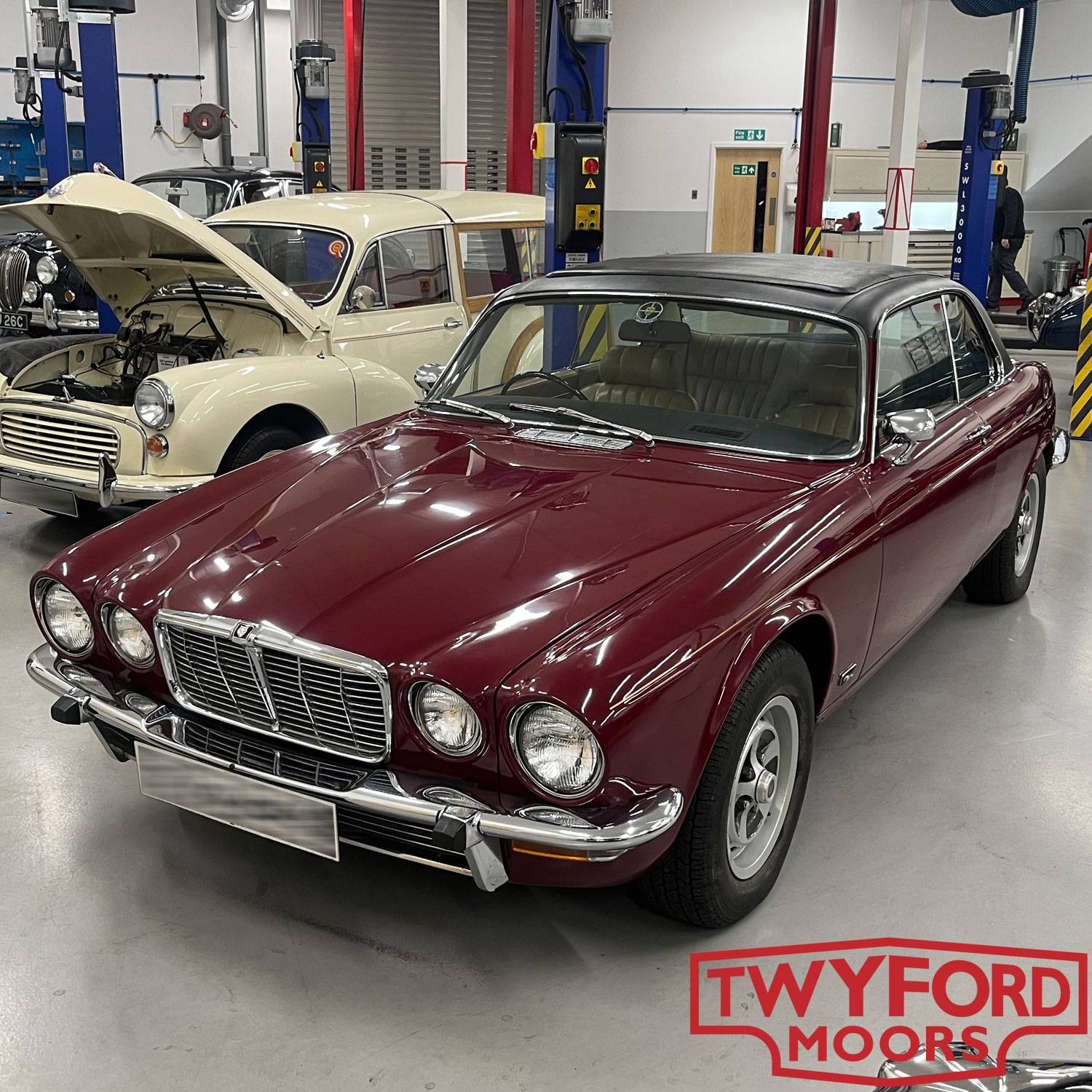A Diverse Start to the Year – Workshop Update
Welcome to our first update of 2025. Despite enjoying a well-earned break over the Christmas period, December and the start of January have been incredibly busy for us. We've been hard at work progressing restorations and tackling some longer winter jobs. With the days gradually getting longer, we can already sense the spring rush approaching, as classics return to the road. We know the final months of winter will fly by.
Spring has historically been our busiest time, with cars coming out of storage or embarking on their first journeys of the year, often developing faults. To help avoid any issues and ensure your car is ready for the season, it’s a good idea to start and exercise your car regularly. If possible, start it, warm it up, and bring the engine revs up. If you’re unable to drive it on the road, just move it forwards and backwards, work the steering and brakes, and check that everything is functioning correctly. Doing this every few weeks can help prevent many problems later in the year.
If your car requires attention before you plan to use it this spring, please contact us sooner rather than later to schedule it in.
In this update, we’ll be sharing details about some unusual cars, at least for us, alongside updates on several long-term projects and restorations.
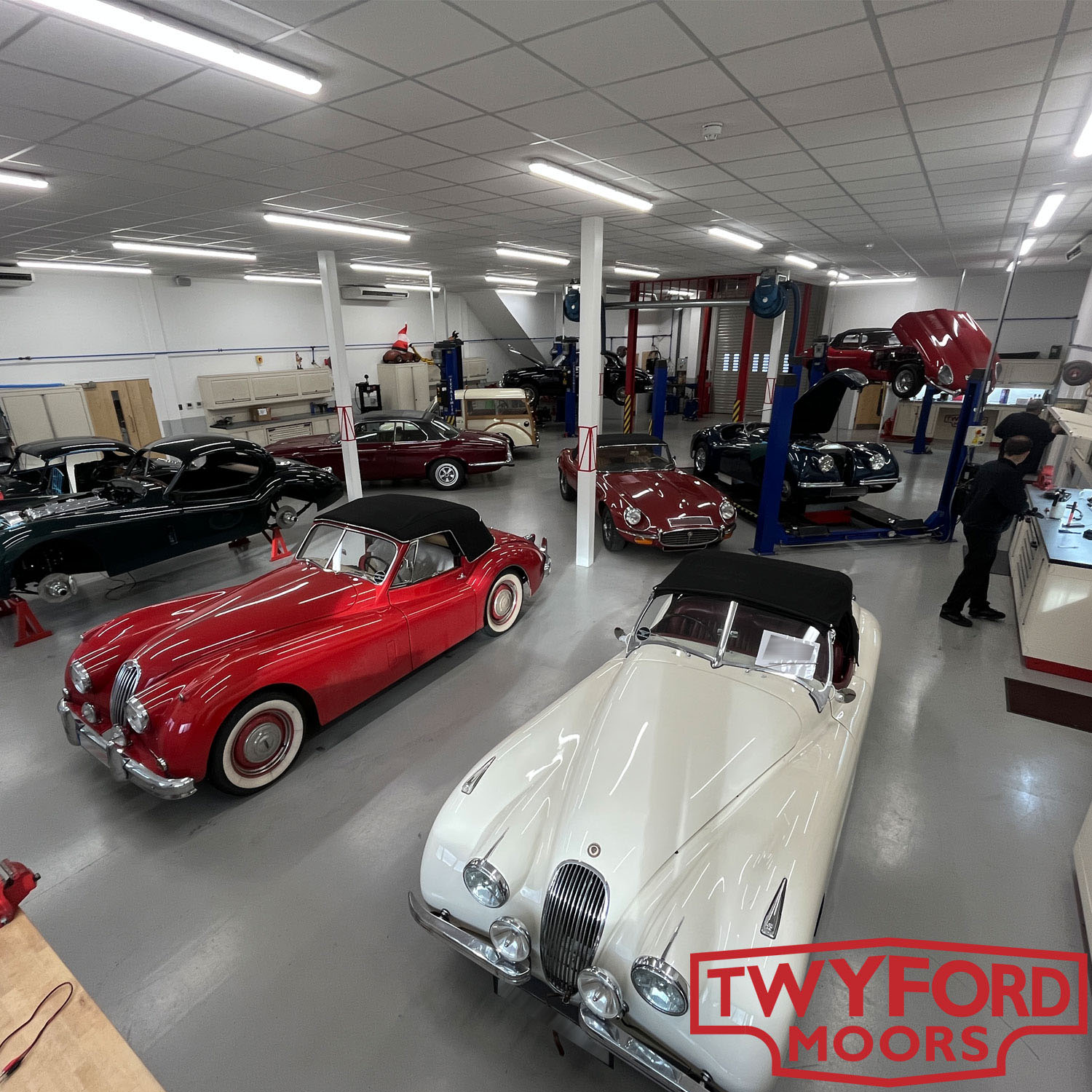
Mercedes 190 SL
In our line of work, it is easy to become complacent, surrounded by beautiful cars every day. However, occasionally, something arrives that turns everybody’s heads. Not only is it a stunning car, but it is also in exquisite condition. This car is a credit to whoever restored it. Inside, outside, and underneath, it is in exceptional condition.
We were particularly impressed by the engineering of this car. XKs were quite advanced for their time, so when other 1950s cars come in, they can often seem somewhat agricultural by comparison. This, however, is a brilliantly engineered vehicle, featuring a particularly fascinating independent rear suspension setup. The front suspension is somewhat more basic, employing kingpins, but is still well-designed.
This 190 SL is with us for an annual service and to have a set of three-point inertia seatbelts fitted. A good set of modern seatbelts is a wise, if not essential, upgrade for any classic car. We supply and fit a variety of seatbelts, including both static and inertia types, to suit different applications. These are custom-made with a choice of material colours to match or complement your car’s interior, finished with chrome hardware and a vintage-style buckle.
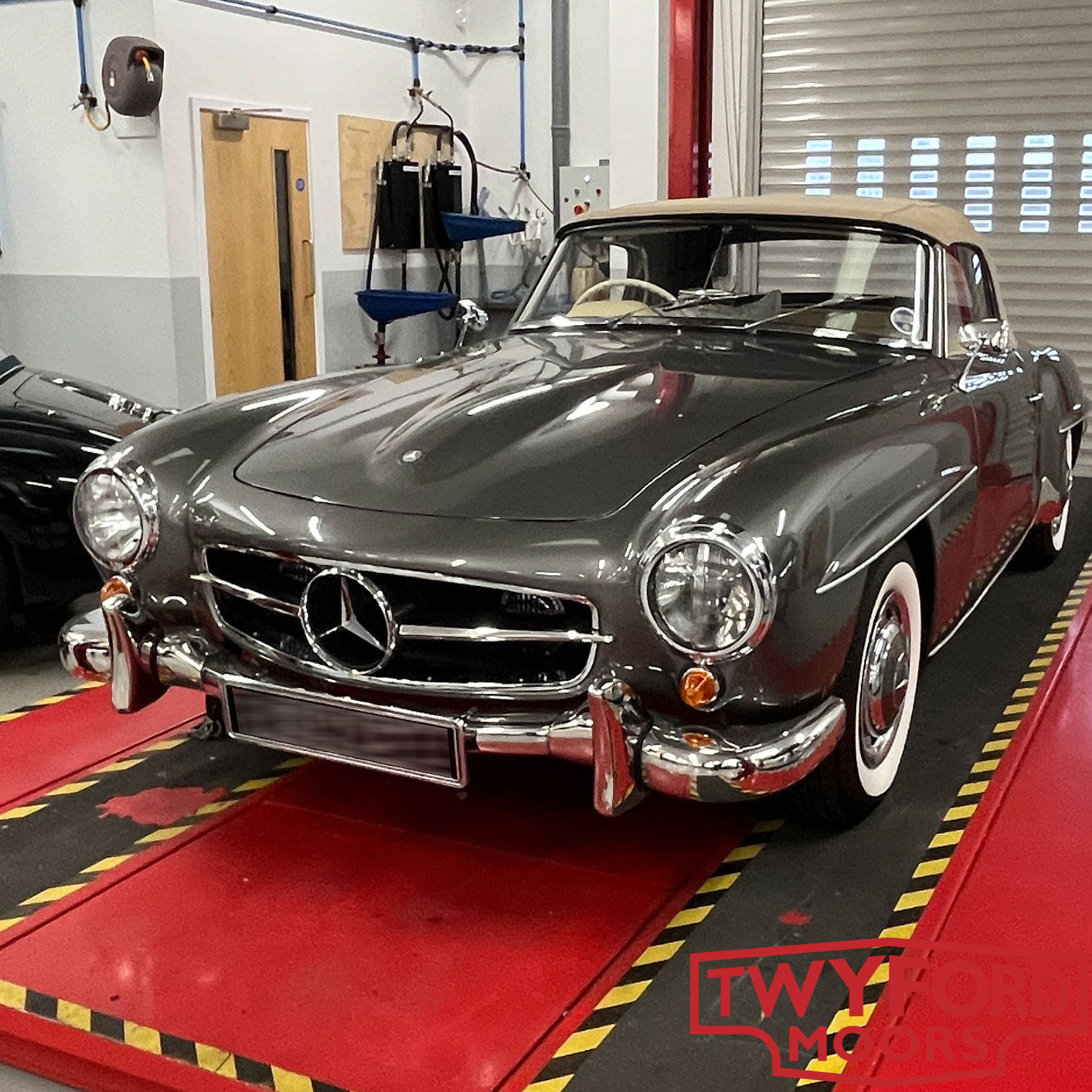
Engine Rebuilds
We build our engines in-house to a variety of specifications, from original all the way to full race builds, customising our offering to suit your needs. We find our fast-road specification engines are the most popular, focusing on torque and low-down, smooth power delivery. These engines are ideal for those wanting a bit more pep from their XK without compromising practicality.
Our full engine rebuilds leave no stone unturned, with the block and head chemically cleaned inside and out. Blocks and heads can be pressure-tested and laser-welded where necessary, allowing us to repair original components that might otherwise have needed replacement in the past. Of course, there is a limit to what can be repaired, but we hold a stock of original engines and can assist in replacing blocks or cylinder heads that are beyond repair.
Our engine rebuilds are not limited to in-house projects but are also available to home restorers. Furthermore, we are not restricted to XK engines; we can rebuild a variety of classic car engines, including Jaguar V12s and those from other marques.
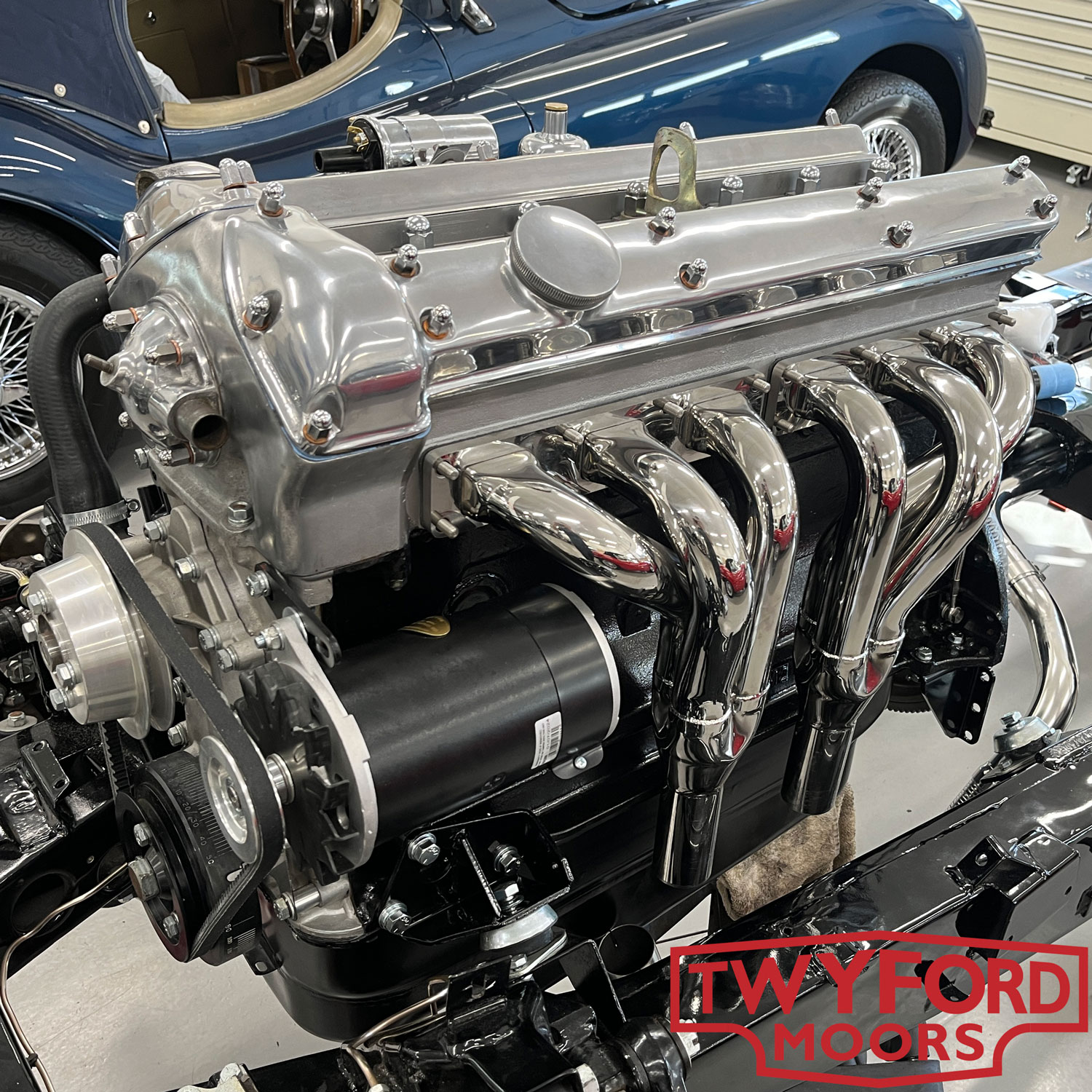
Jaguar XK120 FHC Restoration
Last month, we shared a photo of this XK120 restoration just after the body had been fitted onto the chassis. As you can see, there has been significant progress since then. The wiring has been installed and connected. Since the photo was taken, the wiring has been completed and tested. The finishing touches are now being made to the mechanical systems, with the brake and clutch lines completed, the master cylinders fitted, and fluids added.
Good progress has also been made on the body shell, with lights, bumper irons, and innumerable other components carefully fitted and adjusted.
This is a truly exciting project being built to a very exacting specification for the owner. He intends to use it for rallies and tours around the world, so reliability and durability are key. This car is being upgraded with four-wheel disc brakes, a five-speed gearbox, an aluminium radiator, an electric cooling fan, an alternator, electronic ignition, and much more. We have also fitted an extended pedal box and bucket seats to accommodate taller drivers.
If you would like an XK or E-Type built to your dream specification, please get in touch.
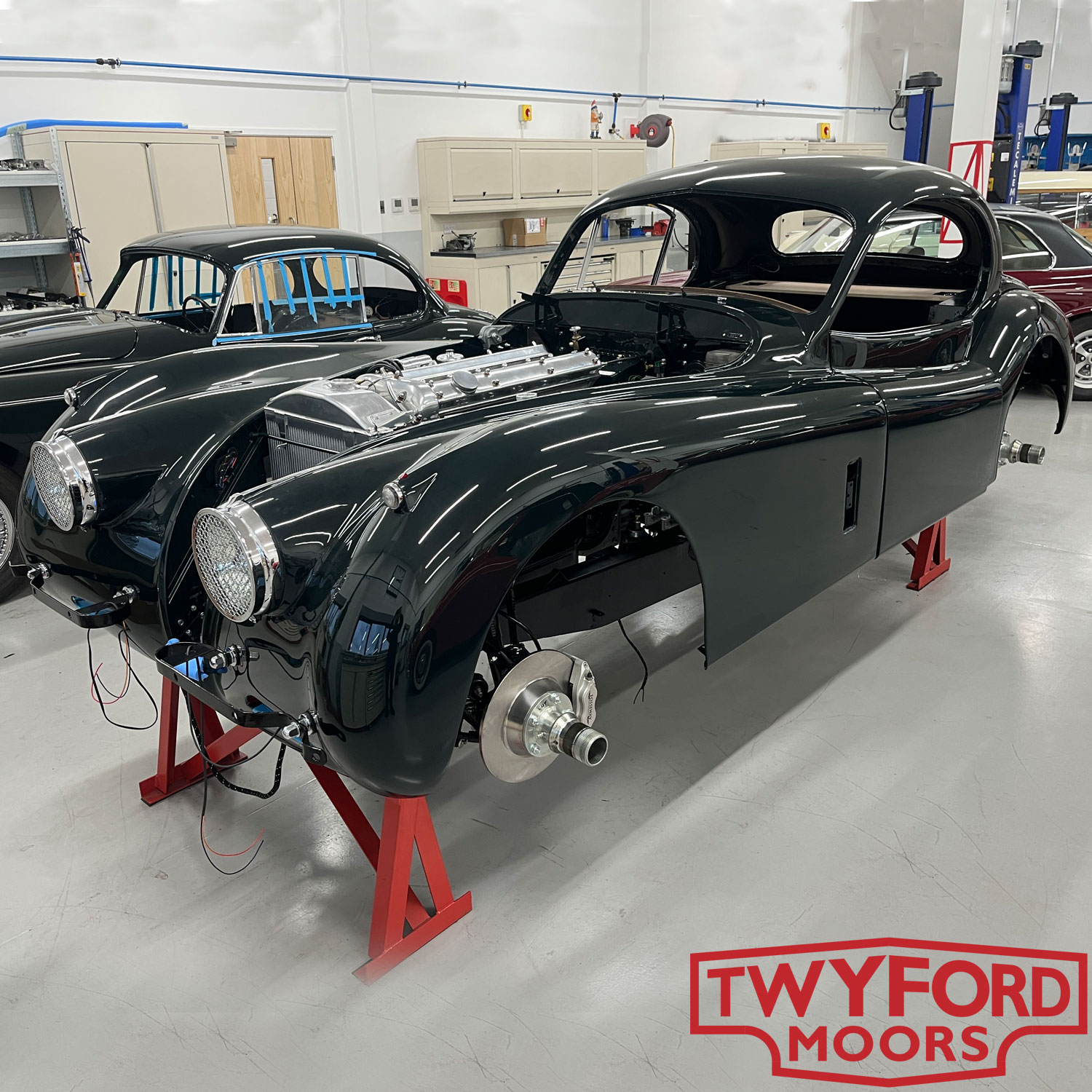
A Severe Oil Leak
An E-Type recently came into the workshop with an extreme oil leak. It was clear that there was oil all over the underside of the car, and when we checked, the oil level was very low. Running the car in the workshop, we looked for any excessive oil leaks or signs of burning oil, but none were initially found. However, once we moved the car, it became apparent that a large amount of oil was escaping from the rear of the engine.
The rear main oil seal is often the culprit in such cases, but it seemed unusual that the leak only occurred when the car was moving. When the sump was removed to investigate, the nature of the problem quickly became clear. The sump had been ‘sealed’ with a brand of blue sealant—something that would make many an engine builder roll their eyes. We won’t delve into the many reasons why this is not an appropriate product to use here, but it’s a topic worthy of its own post on another occasion.
We discovered that the rear sump seal had fallen out—no doubt exacerbated by the poor sealant—into the sump. This allowed oil to literally pour out of the back edge of the sump. While cleaning the sump, we also found the applicator nozzle from the sealant tube had been left inside it. Fortunately, neither item had caused any damage to the engine, and after thoroughly checking everything, we installed a new set of seals and gaskets on the sump.

Morris Minor Traveller
As mentioned, we have had quite a diverse collection of classics in the workshop recently. This Morris Minor Traveller is yet another example. While we often have one or two non-Jaguar classics in the workshop, this winter has seen quite a few other marques arrive simultaneously.
I confess I have a soft spot for Morris Minors and similar small saloons from the period. They are, to me, a living piece of social history. I find it fascinating to compare how relatively rudimentary a Morris Minor is with what we now expect from a small family car.
This Traveller is an excellent example, and it’s a pleasure to be entrusted with its care. It was clearly restored to a very high standard some years ago and has since been well looked after. The car is with us for a service, a general check-over, and to investigate a fault with the fuel gauge. It required very little attention aside from the usual service items and new wheel bearings on one side.
The fuel gauge fault turned out to be a failed wire inside the unit, which was straightforward—if a bit fiddly—to repair. These cars were truly built to be serviced by their owners, and it shows. Everything is easy to access, well thought-out, and simple.
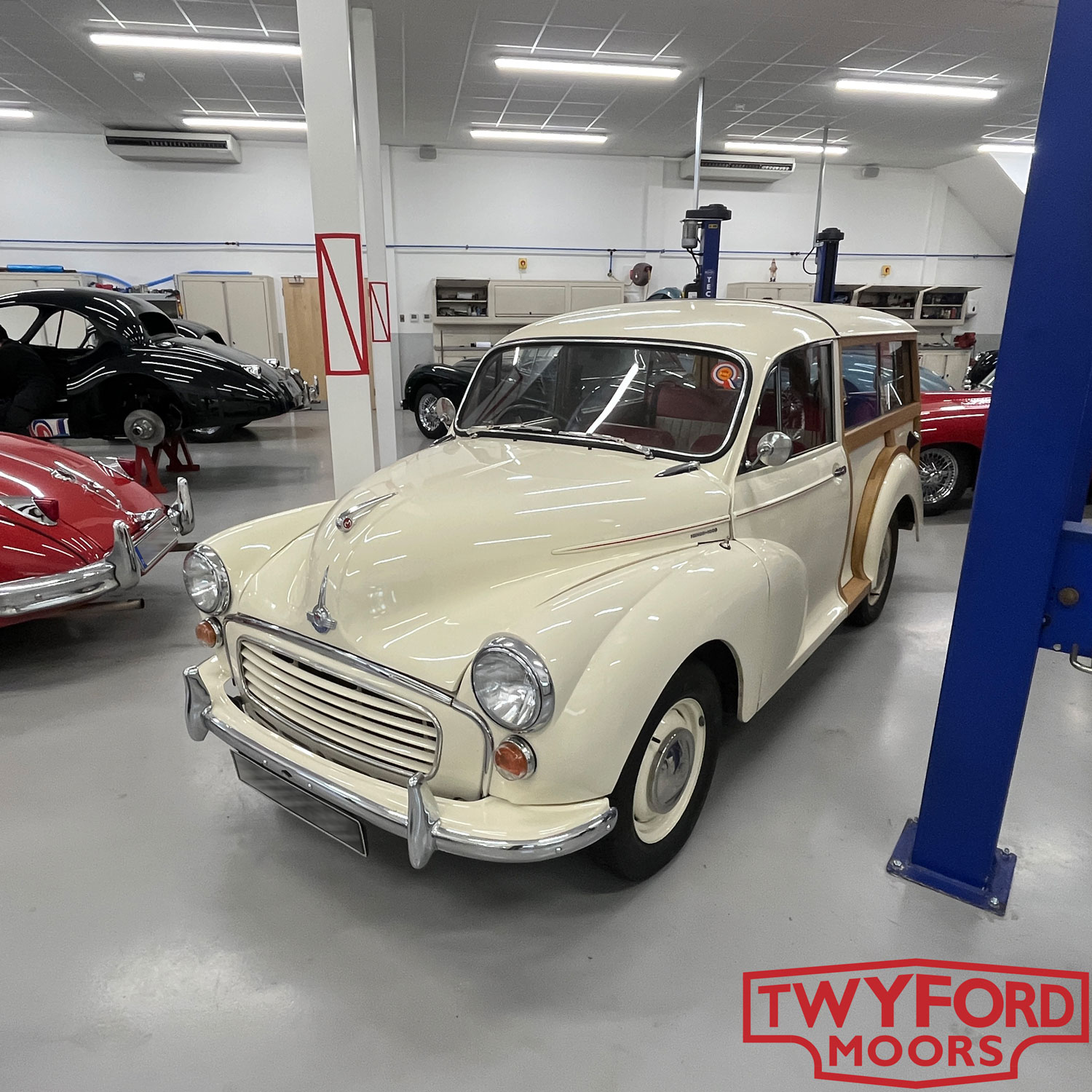
Jaguar MKII Engine Install
Pictured here is a MKII saloon having its engine refitted. This is a very desirable 3.8-litre manual overdrive example and a truly lovely car. It has been with us for a couple of months now for a bit of a ‘winter refresh.’
The gearbox was not operating well, so the engine and gearbox were removed to allow for the gearbox to be rebuilt. Many owners opt for a five-speed gearbox, which is an excellent and cost-effective option, particularly for non-overdrive cars. However, there is something very satisfying about retaining the original gearbox, especially for a 3.8 manual overdrive car.
While the engine and gearbox were out, the gearbox was fully rebuilt with new bearings and seals throughout. The owner also, very sensibly, took the opportunity to fit a new clutch. The engine was checked for any leaking core plugs and other issues and was smartened up before refitting.
While the engine and gearbox were removed, the car underwent minor bodywork repairs and a respray. With the car back from paint, the careful task of refitting the engine and gearbox began. It is a very tight engine bay for such a large engine, so great care is required.
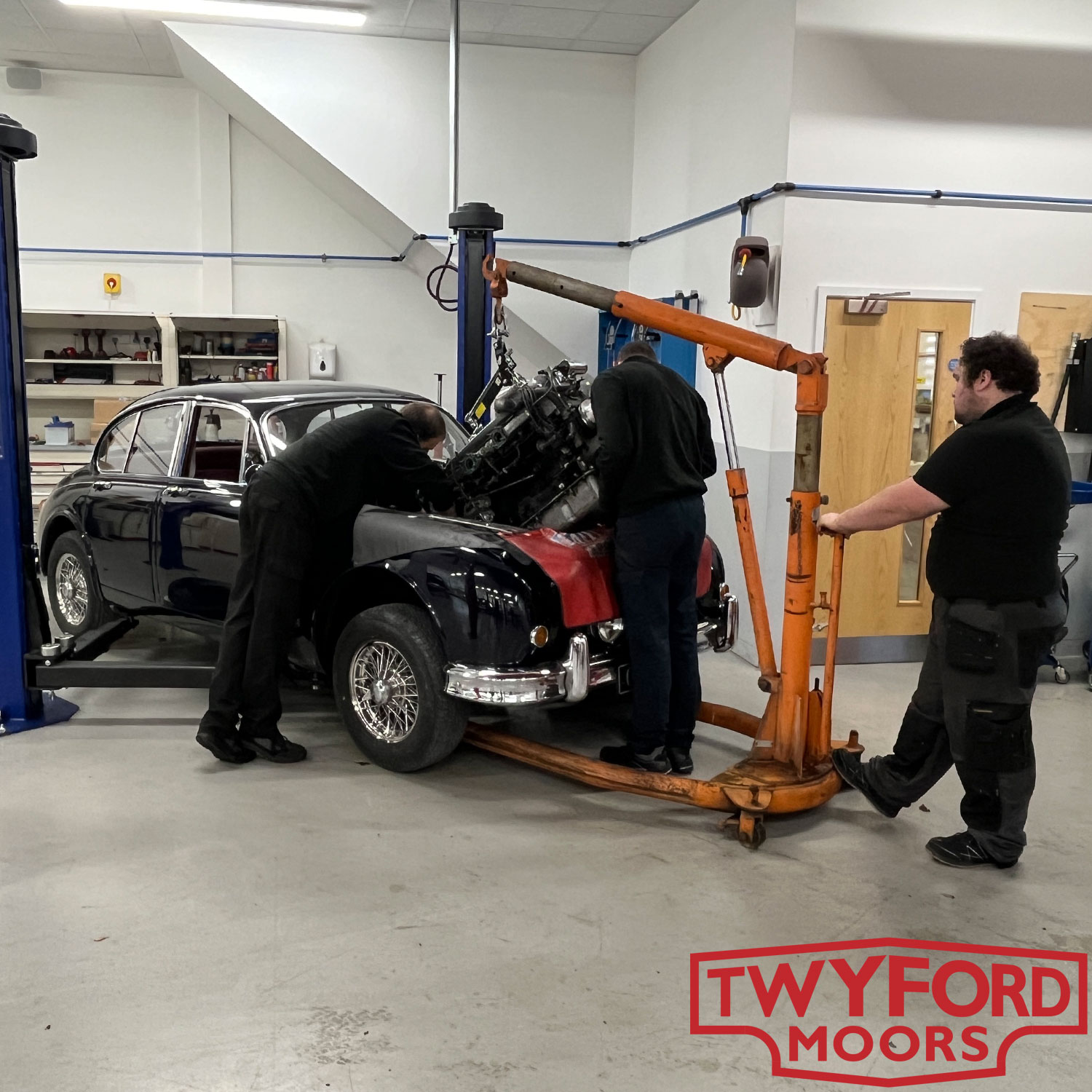
Jaguar E-Type Restoration
I simply couldn’t resist sharing this photo. In the foreground is an E-Type in the fabrication stage of a full restoration. In the background is a finished E-Type being prepared for collection. Both are 3.8-litre Series 1 cars, and both will sport similar upgrades, including a five-speed gearbox, upgraded brakes front and rear, and electronic ignition.
E-Type coupes are truly stunning cars, but achieving good panel fit is not easy. A poorly aligned bonnet or doors can really let a restoration down. That’s why we dedicate extra time at this stage of a restoration to ensure everything is as precise as possible before paint.
The fabrication on this E-Type restoration is now complete. It will be chemically dipped again to remove any surface corrosion before being E-Coated. This process involves submerging the car and coating it in a corrosion-resistant finish inside and out. Submerging ensures the coating reaches every part of the shell, including areas that cannot be seen or reached with a spray. The expectation for our restorations is that they will last for decades without suffering the rust issues common in the period.
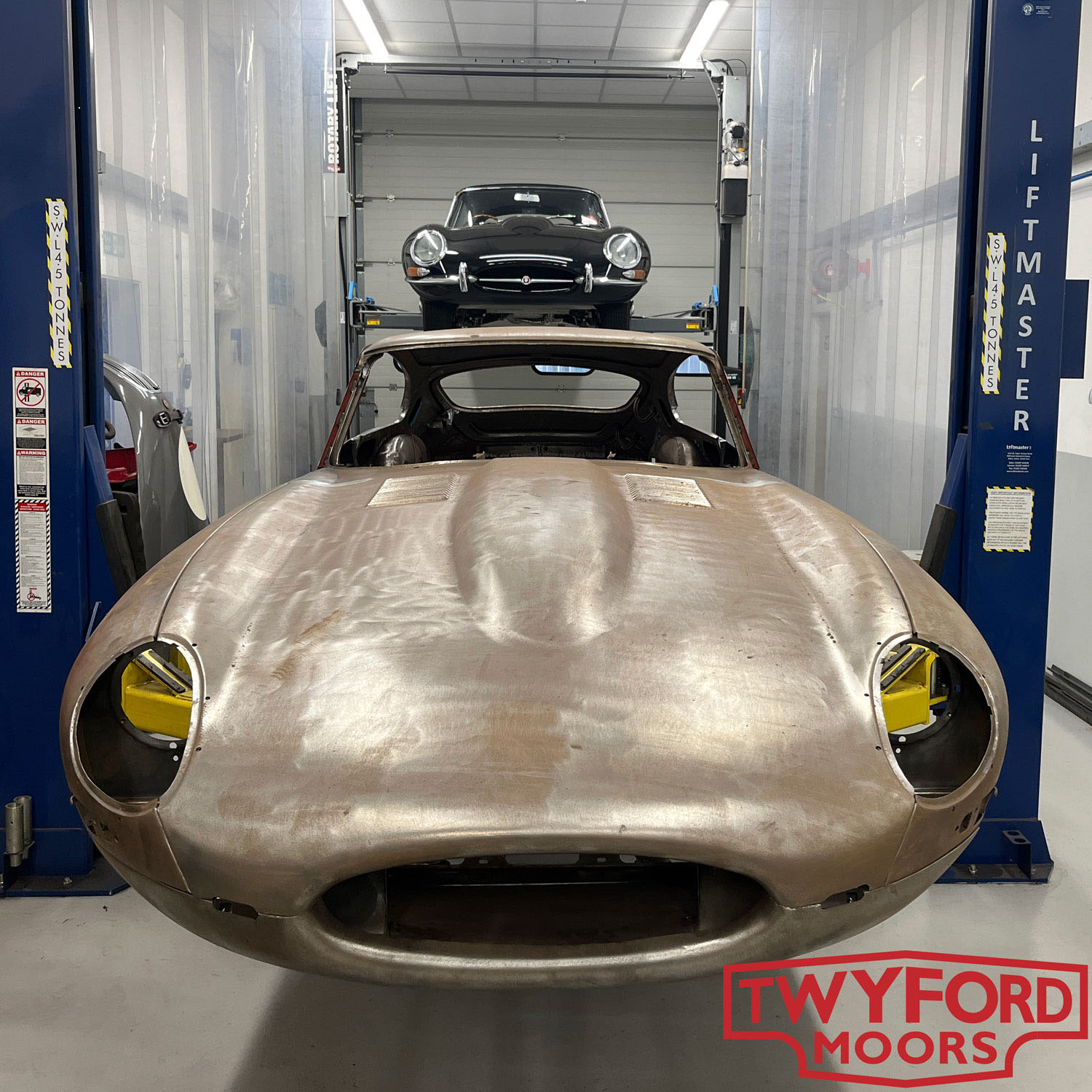
Fiat 124 Spider
This little Fiat 124 has become one of our regular visitors. Last year, after an overheating and head gasket failure, we rebuilt the engine. It is now back with us, having completed its running-in miles, for a check-over, re-torque, and rolling road tune.
The four-cylinder twin-cam engine fitted to these cars is an absolute delight and, in my opinion, one of the finest four-cylinder engines ever produced. Unfortunately, we discovered during the rebuild that Fiat went through many revisions, meaning some versions were only in production for a few months. This made parts challenging to obtain.
In the case of this engine, we had to source a replacement cylinder head from Canada, have camshafts made in the UK, and have new pistons manufactured in Italy. These challenges significantly extended the project’s timeline. However, we are pleased that the car has been back with its owners for some time, allowing them to enjoy it. Once we’ve completed the check-over and tune, they will be able to unleash the full potential of this delightfully revvy engine and truly enjoy the car.
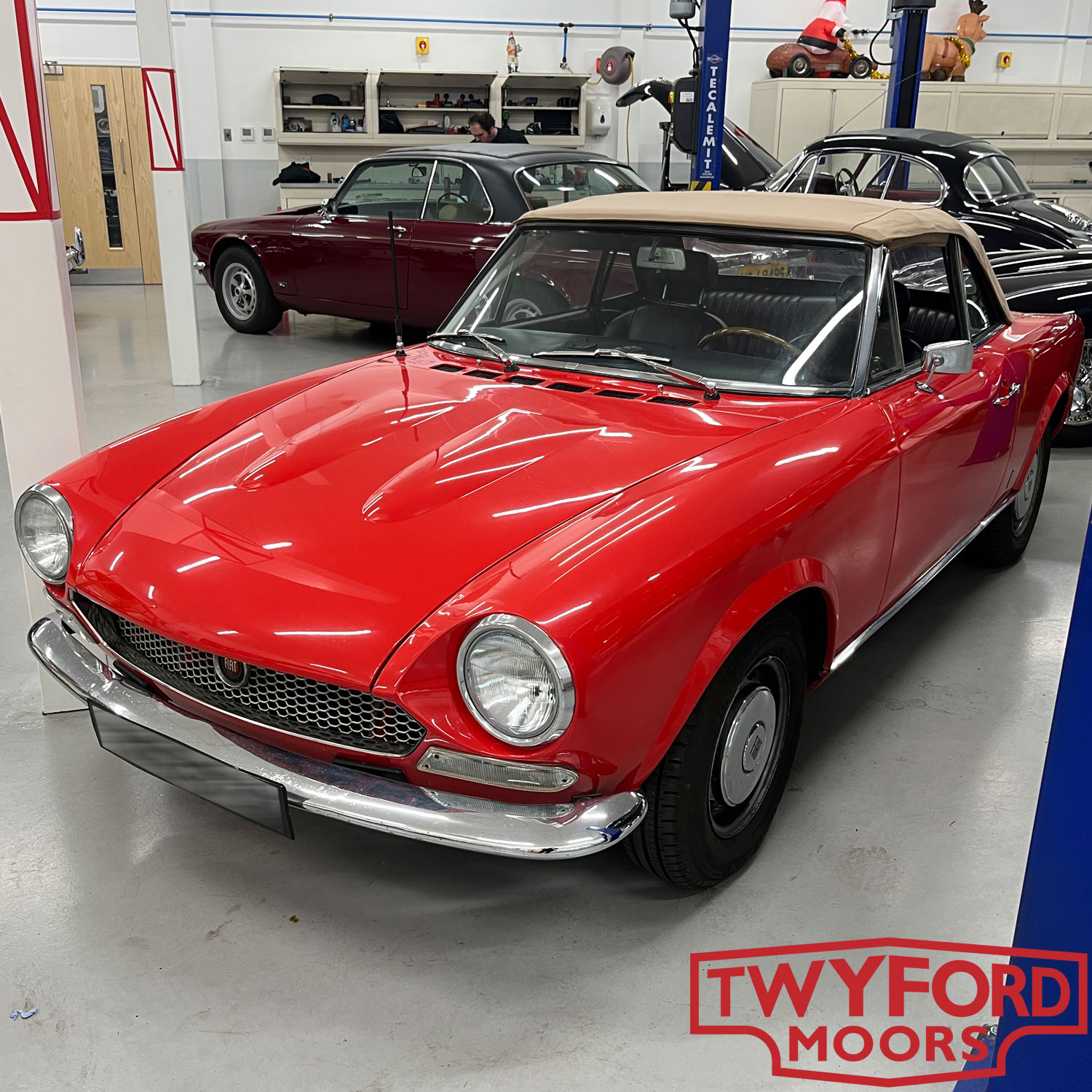
Jaguar E-Type Engine Rebuild
Pictured here is the 3.8-litre XK engine belonging to the Jaguar E-Type FHC we previously showed in its fabrication stage. We aim to refurbish and rebuild as many components as possible during the bodywork stage of a restoration. This approach means that when the body returns from paint, we can proceed with assembly much more efficiently, often cutting months off the restoration timeline.
Shown here, the engine has its five-speed gearbox fitted and is mounted on our engine test bed for its first start-up. This test rig allows us to start, tune, and test an engine before fitting it into the car. If any issues arise with the engine, clutch, or gearbox, we can address them without the time and effort of repeatedly fitting and removing the engine.
Although issues are rare, this process occasionally proves invaluable. It also allows us to test engines we’ve rebuilt for home restorers before collection. This not only saves hours of labour but also minimises the risk of damage from multiple engine installations and removals.
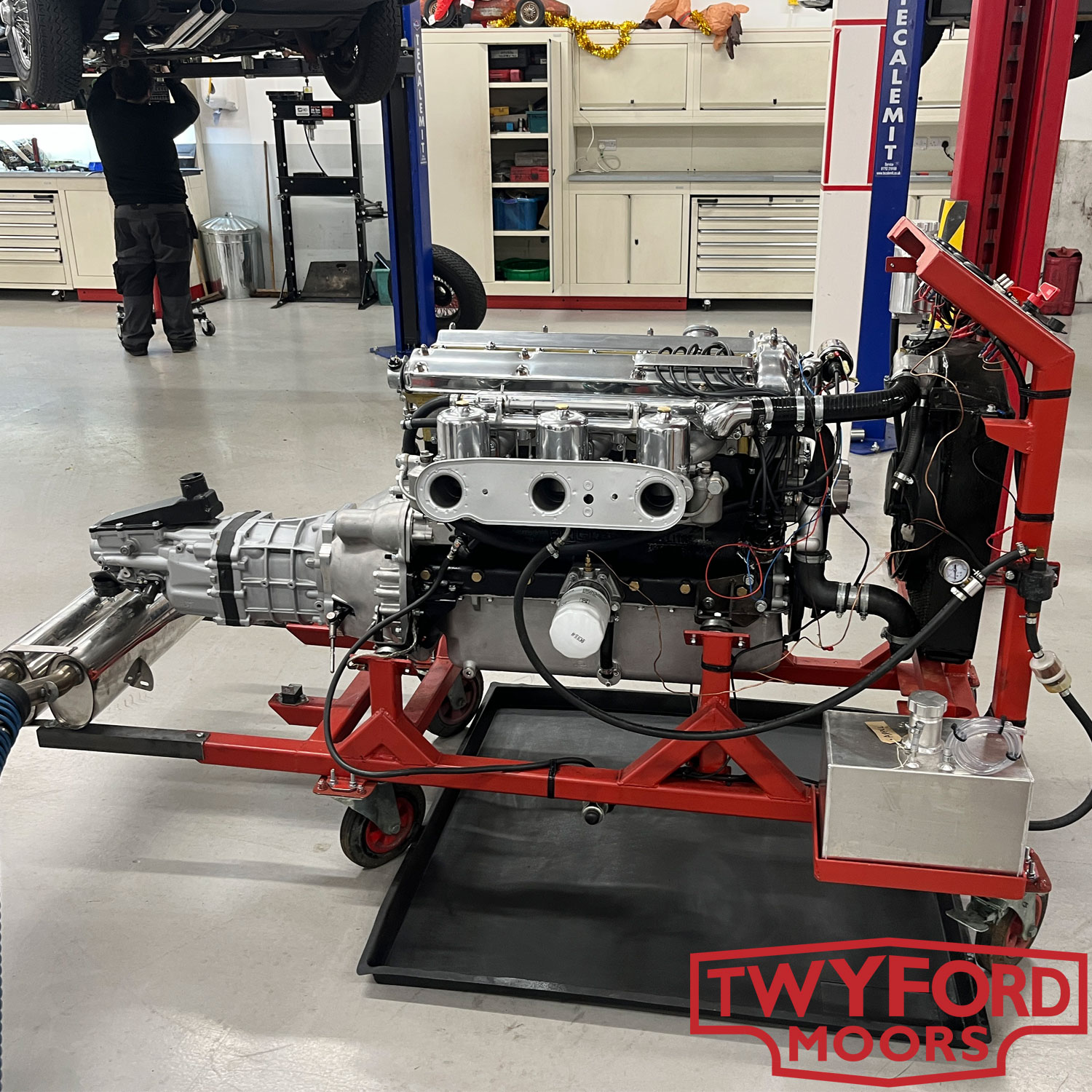
Jaguar XJC
Here’s another of our slightly unusual visitors to the workshop, though this one is still a Jaguar with an XK engine. We recovered this XJC from the owner’s home as it was a non-starter. Our covered car transporter allows us to collect and deliver cherished classics year-round, without worry about poor weather or gritted roads.
Although this car shares much with XKs and E-Types, including the XK engine and some suspension components, it is from an era when car electrics became more complex. Fortunately, our skilled electrician was more than capable of navigating his way around the car after some research.
The non-starting fault turned out to be the result of three issues occurring simultaneously, which made diagnosis rather time-consuming. We quickly established that the car had a good spark and was getting fuel to the carburettors. However, we discovered that the fuel had gone stale after months of storage. This is becoming more of an issue with the higher ethanol content in modern fuels, so it’s worth keeping in mind when storing your car.
With fresh fuel added, we found that the choke was not operating correctly. After disconnecting it, we managed to get the car running. Finally, we identified a significant air leak between the carburettors and the inlet manifold. Once this was addressed, the car ran well, though the choke still requires repair.
